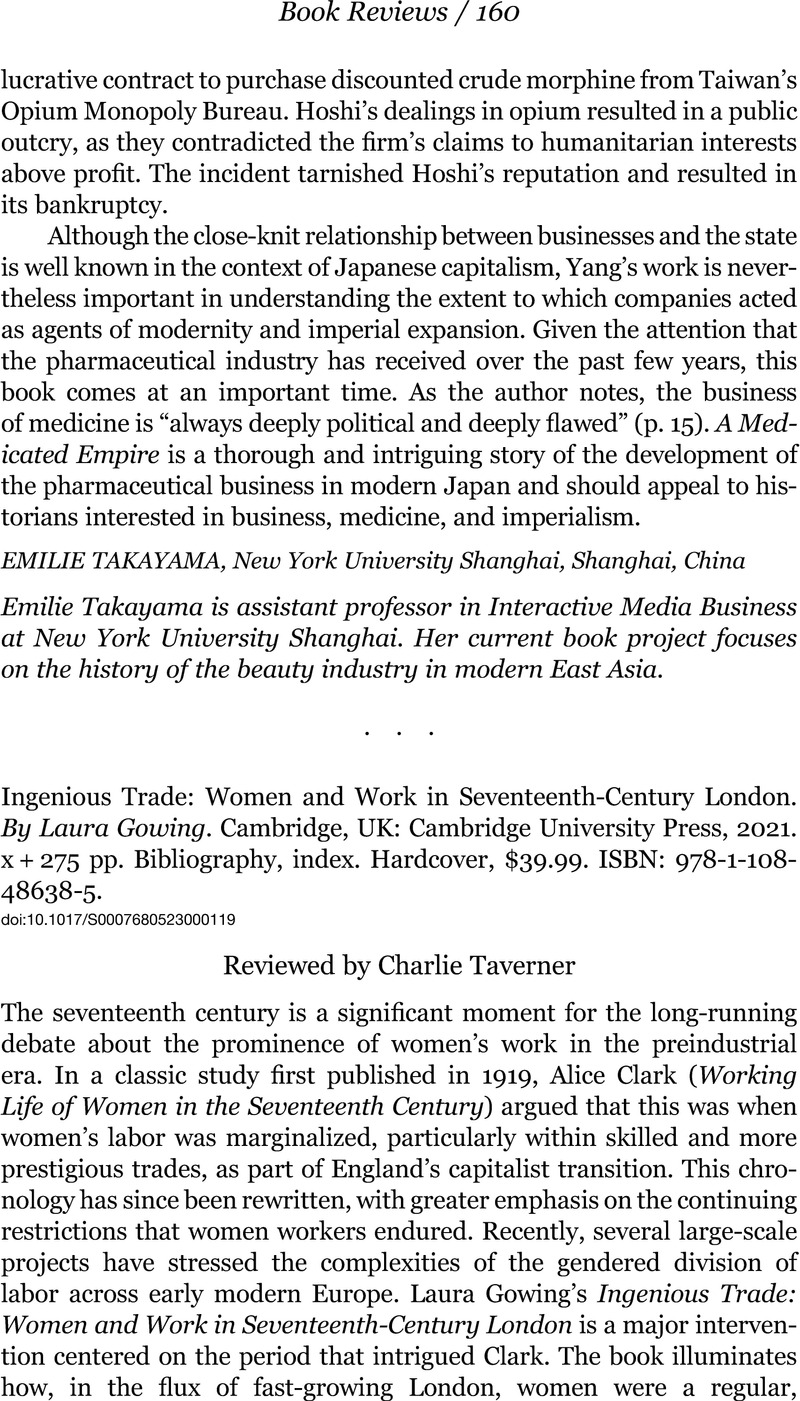No CrossRef data available.
Article contents
Ingenious Trade: Women and Work in Seventeenth-Century London. By Laura Gowing. Cambridge, UK: Cambridge University Press, 2021. x + 275 pp. Bibliography, index. Hardcover, $39.99. ISBN: 978-1-108-48638-5.
Review products
Ingenious Trade: Women and Work in Seventeenth-Century London. By Laura Gowing. Cambridge, UK: Cambridge University Press, 2021. x + 275 pp. Bibliography, index. Hardcover, $39.99. ISBN: 978-1-108-48638-5.
Published online by Cambridge University Press: 10 May 2023
Abstract
An abstract is not available for this content so a preview has been provided. Please use the Get access link above for information on how to access this content.

- Type
- Book Review
- Information
- Copyright
- Copyright © 2023 The President and Fellows of Harvard College


